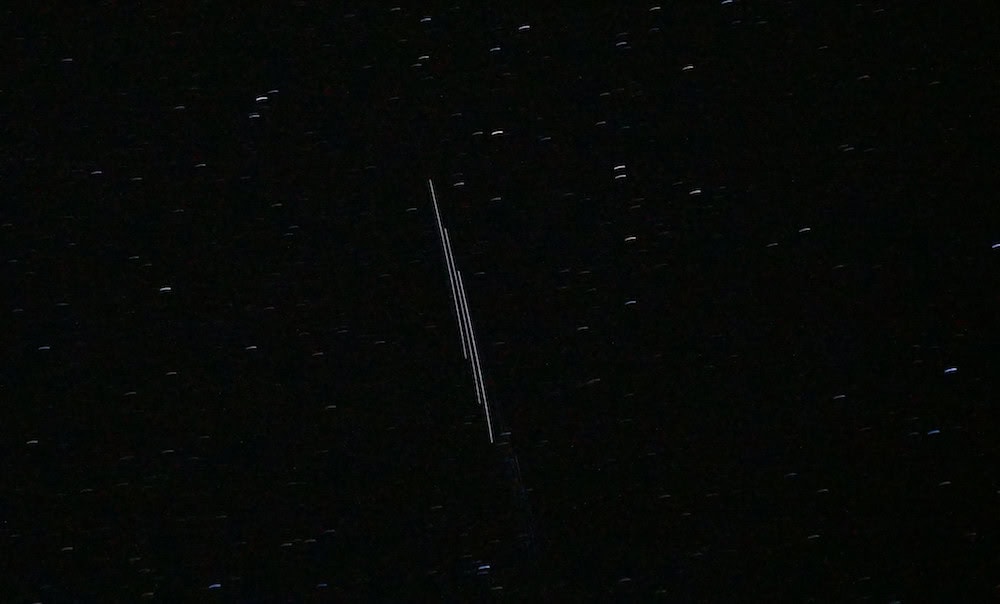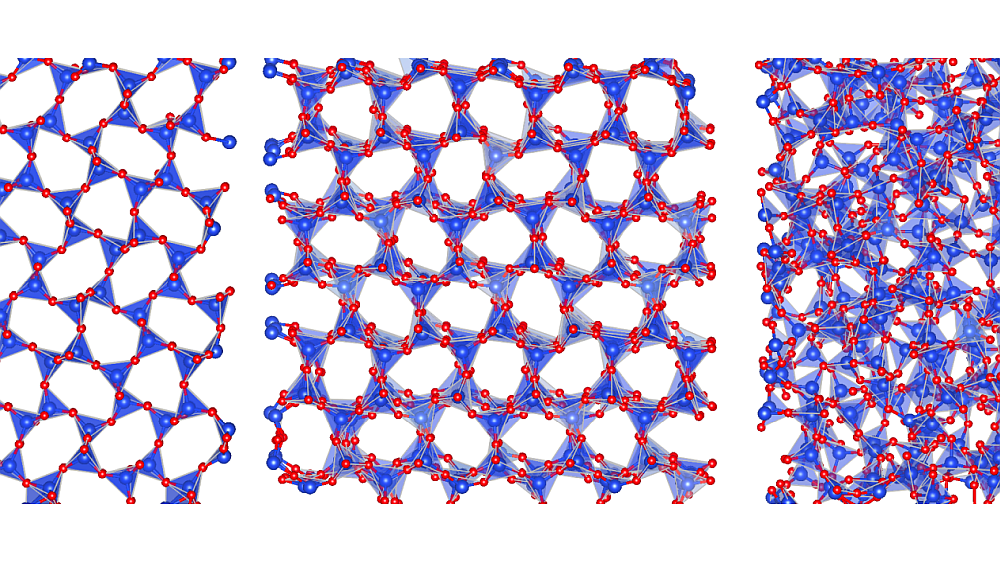
[Image above] Image of Starlink satellites shortly after the launch of the first 60 satellites in May 2019. Brightness of the satellites is causing major complications for astronomers trying to image the night sky. Credit: Mike Lewinski, Flickr (CC BY 2.0)
If you follow the astronomy world at all, you know that Elon Musk has been the center of attention for the past year—and not in a good way.
Last May, the Musk-led company SpaceX launched the first 60 satellites in the much-hyped Starlink constellation, a proposed constellation of almost 12,000 satellites to provide global internet coverage from space. To put that number into perspective, consider that the index of objects launched into outer space prepared by the United Nations showed only 4,987 satellites orbited the Earth at the start of 2019.
As of this month, SpaceX has deployed 182 of the 12,000 satellites (with 60 more launched today) and already filed paperwork to launch an additional 30,000. But the satellites currently in orbit are already causing major complications for astronomy.
The satellites launched by SpaceX are so bright that they leave bright streaks across telescope images, obscuring stars and other celestial objects. Early simulations done by astronomers at the Vera C. Rubin Observatory in Chile estimate the 12,000 satellites will “effectively ruin” images about 20% of the time—and that’s not even accounting for the proposed 30,000 more satellites.
SpaceX says it will make the satellites dimmer in the future, but it continues to launch dozens of undimmed satellites every few weeks as it investigates a nonreflective coating, prompting some scientists to call the legality of the project into question.
Fraser Cain, cocreator of the Guide to Space video series on YouTube, provides more details on the situation in the video below.

Credit: Fraser Cain, YouTube
This situation begs the question—are so many satellites really necessary to achieve worldwide internet coverage?
Since the 1980s, scientists have known that worldwide coverage is theoretically possible with just four satellites circling the world at higher altitudes in an elliptical orbit (most satellites orbit the world at low altitudes in a nearly circular orbit). Unfortunately, the amount of propellant needed to keep the satellites in such an orbit would amount to unfeasible costs, so the four-satellite configuration generally does not receive serious consideration.
But a new open-access study may make such a configuration feasible.
The study comes from a National Science Foundation-sponsored collaboration between researchers at Cornell University, the University of California, Davis, and The Aerospace Corporation, a nonprofit corporation that operates a federally funded research and development center for the space enterprise. The team used the Blue Waters supercomputer at the University of Illinois at Urbana-Champaign to sift through more than five million simulated orbital designs.
Ultimately, the researchers identified two models that could orbit for either a 24- or 48-hour period and achieve continuous coverage over 86% and 95% of the globe, respectively. For those regions that experience outages, the maximum duration would last approximately 80 minutes per day.
Patrick Reed, senior author and Joseph C. Ford Professor of Engineering at Cornell University, says in a Cornell press release that the tradeoff is worth it.
“This is one of those things where the pursuit of perfection actually could stymie the innovation,” Reed says. “And you’re not really giving up a dramatic amount. There might be missions where you absolutely need coverage of everywhere on Earth, and in those cases, you would just have to use more satellites or networked sensors or hybrid platforms.”
Beyond the near-perfect coverage, the other important aspect of these two models is that the amount of propellant required to keep the satellites going is reduced considerably by leveraging energy from nonlinear orbit perturbation forces, for example, solar radiation pressure and gravitational effects of the sun and moon.
Not only does less propellant significantly reduce the cost to operate such satellites, “the reduction in propellant mass is large enough to potentially accommodate another instrument, include another mission focus, double the design life, or some combination of these mission-level benefits,” the researchers write in the paper.
The researchers note that although these designs “do not represent a fully optimized constellation management approach for an operational system,” Lake Singh, lead author and systems director for The Aerospace Corporation’s Future Architectures department, adds in the Cornell press release that the proposed constellations “may provide substantive advantages to mission planners for concepts out at geostationary orbits and beyond.”
The open-access paper, published in Nature Communications, is “Low cost satellite constellations for nearly continuous global coverage” (DOI: 10.1038/s41467-019-13865-0).
Author
Lisa McDonald
CTT Categories
- Aeronautics & Space
- Modeling & Simulation


